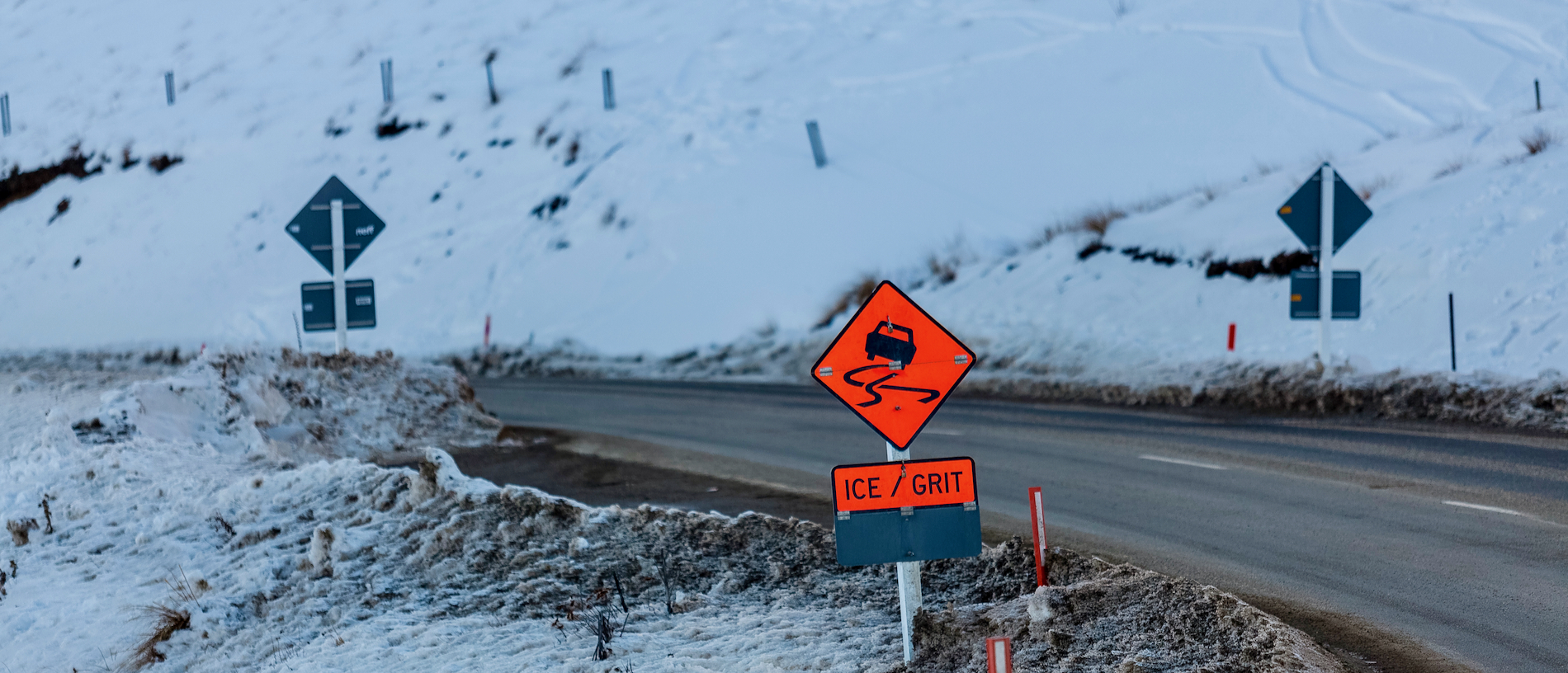
Top tips for safe winter driving
Are you heading to the ski slopes this winter? Whether it's your first time driving in icy conditions or you’re a seasoned veteran, it pays to be prepared. Steve Gurney, nine times Coast to Coast winner, shares his top tips for driving safely on winter roads.
How can I improve my winter driving skills?
Before driving up to the slopes, Steve recommends people first skill themselves up on safe winter driving.
“No matter what vehicle you’re in, it’s well worth learning about anti-lock braking, momentum, road camber, cornering and tyres,”Steve says. “Too often I’ve seen cars on their roofs or drivers stuck in the middle of the road to the ski field, too afraid to continue up or down the mountain.”
Driver training could be an advanced driving course (approved course providers are listed on Waka Kotahi’s website, of which the AA is one) or simply finding a safe place to practice under different conditions.
Highlands Park, Cromwell, offers a specific winter drive experience in your own car with tuition from world-class instructors. Participants learn how to handle their car in adverse conditions and what to do if they lose control of the vehicle. It’s hands-on and provides potentially lifesaving skills.
“Mountain biking also teaches invaluable lessons of traction and cornering, and it’s directly transferrable to driving,” Steve says.

What are the best tyres for winter driving?
There are ongoing discussions about which tyres are best for winter conditions. Should people use regular tyres, winter tyres or snow chains? “In places with full seasonal snow cover, then it’s worth getting snow tyres. But for New Zealand conditions, snow tyres are not safe for our typical ski field trips because of their different grip pattern and the softer compounds, meaning they will too easily lose grip at highway speeds on tar seal,” Steve says. “Instead, I go for a more aggressive road tyre with more open tread and better compound.”
“One of the most important factors for New Zealand ski field tyres is to have plenty of tread depth and an open tread pattern that clears mud and snow. If they’re well worn, they become useless in winter,” Steve says. “Get good, grippy tyres and use snow chains when going up the ski slopes.”
Do I need snow chains in New Zealand?
While they seem like a hassle to fit, snow chains can be invaluable (and frequently compulsory) to get you up the ski slopes.
“Modern snow chains are easier to fit,” Steve says. “Practice on your driveway without the kids in the back before you get to the slopes!”
“It’s often muddy work fitting chains, so I chuck an old jacket or overalls into the boot and an old pair of gloves – I’ve even used dishwashing gloves,” he continues. “And remember it’s safer to fit snow chains on the flat and to put them on before you really need them.”

Is an automatic or manual car better for winter driving?
Steve prefers the extra control he gets with a manual compared to an automatic vehicle. But no matter whether you’ve got a manual or automatic transmission, let the engine do the work for you when braking. “Use low gears, especially on the way down the slopes. Or, if you can move your automatic transmission into a manual mode, do that,” Steve says. “You’ll get better control, and so you’ll be safer on the roads.”
What are the best vehicle accessories for a ski trip?
Roof boxes can be a fantastic addition to any vehicle in the wintertime. Skis and snowboards can be easily popped into the box, which keeps snow and ice out of the car. “Just make sure the roof box is long enough to fit your skis!” Steve says.
Boot liners are also a valuable addition to any vehicle at this time. “You can put the back seats down and attach your boot liner or tarpaulin to the front seats and the tethers at the back of the car,” Steve continues. “That way, you’ve always got protection for the carpet.”

What car safety checks should I do before a ski trip?
Making sure your tyres have plenty of tread will significantly affect your stopping distances and cornering grip. Also, check fluid levels, such as coolant and windscreen washer fluid. “Keeping an ice scraper in the glove box is a good idea, and it’s better than using boiling water to defrost your windscreen,” Steve says. “Having some strong washer fluid is also wise – it’ll save your windscreen wipers. And new wiper blades make a huge difference to mountain visibility – they’re well worth the few dollars!”
In cold weather, your car’s motor draws more charge from the battery, so look after your battery by ensuring it’s clean and all the connectors are tight. You can test the battery’s power at an AA Auto Centre or your local mechanic.
Before you set off on your trip, it’s worth filling up with fuel, so that if you get stuck for an extended period you’ll have the capacity to keep yourselves warm.
Story by Kathy Catton for the Winter 2023 issue of AA Directions magazine.
Explore more from AA Directions magazine while you're here:
- aa-research-reveals-the-safety-benefits-of-new-roads
- wheel-love-a-1981-mitsubishi-mirage
- Matthew O’Hagan and Courtney Naismith – Utilize Studios
